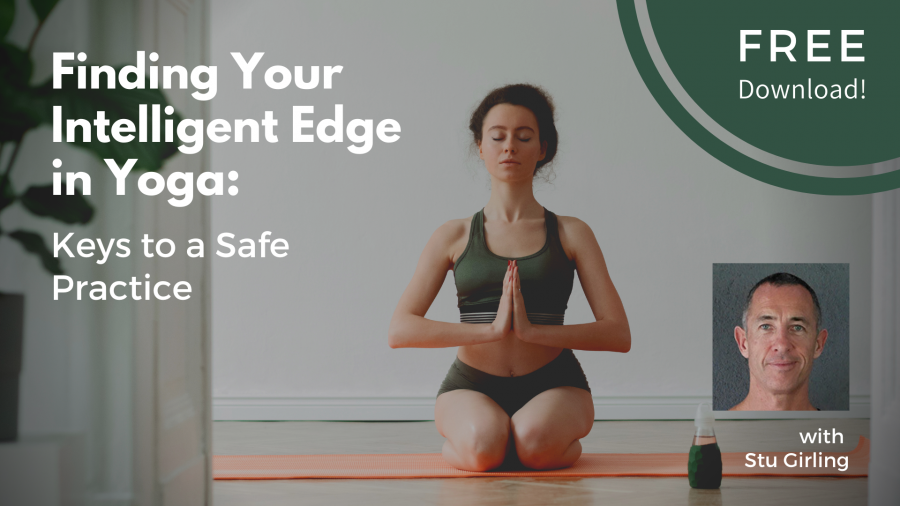Free Download! Finding Your Intelligent Edge in Yoga: Keys to a Safe Practice
Course Info
- Price:
- $0.00
Stu Girling
 Stu Girling teaches yoga anatomy workshops around the world and interviews renowned yoga teachers and related professionals. Stu practices Ashtanga Yoga and teaches anatomy & physiology on Yoga Teacher Training Programs. The concept for his site loveyogaanatomy.com arose from the search for yoga...
Stu Girling teaches yoga anatomy workshops around the world and interviews renowned yoga teachers and related professionals. Stu practices Ashtanga Yoga and teaches anatomy & physiology on Yoga Teacher Training Programs. The concept for his site loveyogaanatomy.com arose from the search for yoga... 
As yoga teaching comes of age, there is a growing need for teachers and practitioners to engage in a yoga practice grounded in the anatomy and kinesiology of healthy movement.
In this free download, self-designated anatomy nerd Stu Girling, founder of LoveYogaAnatomy.com talks with YogaUOnline-founder Eva Norlyk Smith about the growing movement within yoga to develop anatomical knowledge relating specifically to the practice of yoga.
“One of the things that we're starting to recognize in the yoga community is that you cannot really teach every body, unless you learn to recognize the differences between everyone anatomy wise,” notes Stu. “You have to teach differently to different bodies.”
The more you know about the body, the more you can customize your class and sequencing to the people in the class without simply following some rigid principles of alignment, Stu notes.
There is a growing awareness of how musculoskeletal imbalances affect our practice, Stu explains. For example, most yoga teachers by now are familiar with the many ways tight hamstrings affect alignment in yoga postures.
However, when it comes to the effects of skeletal structures on our practice and our ability to perform certain poses, there’s much less awareness of how structural variations affect our practice.
Even more importantly, few yoga students (and their teachers) know how to distinguish between limitations that come from tight muscles vs. limitations that come from the structure of the joint.
This is one of the key challenges in yoga practice and teaching, Stu says. We often refer to it as ‘finding the intelligent edge,’ i.e. knowing when it’s constructive and helpful to go a little further, and knowing when you are pushing against bone and going further will be counterproductive and could lead to injury.
“The bony structure varies slightly between individuals. Some people have deeper hip sockets, for example,” Stu notes. “If the limitation is in the soft tissues, then you can often help release it with constructive stretching. And, of course, you can still overdo it and damage the soft tissue in that area. But generally, it repairs quite well.
“But if the limitation is in the joints themselves, they don't heal anywhere nearly as well as the soft tissue does. So if we are under the mistaken belief that by going deeper in a particular posture, we’re Influencing the soft tissue, we could actually be working into the joint itself and creating damage.
“And then we're completely turning the benefits of yoga on its head.”
The solution, Stu notes, is to learn to distinguish between the feelings of compression and tightness when we are in a yoga pose. Tightness is simply limitations in the soft tissues, while feelings of compression is a red flag that you are pushing against limitations in the joint.
He discusses how we can learn to distinguish between tightness and compression and highlights which areas of the body are more vulnerable than others.
He further discusses how these cautions apply to the practice of yin yoga and how to know which students might be more susceptible to injury with long, deep holds in stretching yoga poses.